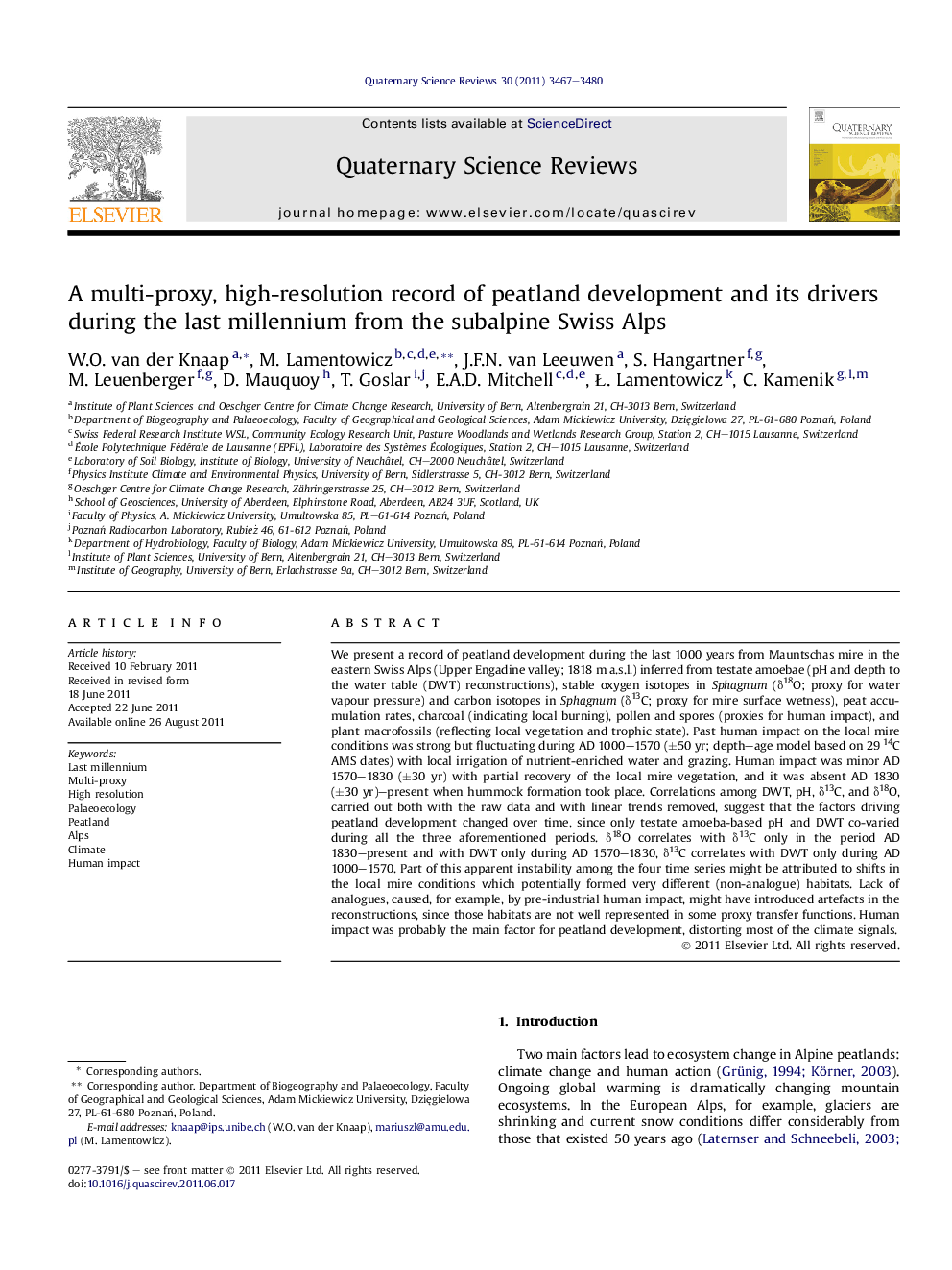| کد مقاله | کد نشریه | سال انتشار | مقاله انگلیسی | نسخه تمام متن |
|---|---|---|---|---|
| 4735833 | 1640906 | 2011 | 14 صفحه PDF | دانلود رایگان |

We present a record of peatland development during the last 1000 years from Mauntschas mire in the eastern Swiss Alps (Upper Engadine valley; 1818 m a.s.l.) inferred from testate amoebae (pH and depth to the water table (DWT) reconstructions), stable oxygen isotopes in Sphagnum (δ18O; proxy for water vapour pressure) and carbon isotopes in Sphagnum (δ13C; proxy for mire surface wetness), peat accumulation rates, charcoal (indicating local burning), pollen and spores (proxies for human impact), and plant macrofossils (reflecting local vegetation and trophic state). Past human impact on the local mire conditions was strong but fluctuating during AD 1000–1570 (±50 yr; depth–age model based on 29 14C AMS dates) with local irrigation of nutrient-enriched water and grazing. Human impact was minor AD 1570–1830 (±30 yr) with partial recovery of the local mire vegetation, and it was absent AD 1830 (±30 yr)–present when hummock formation took place. Correlations among DWT, pH, δ13C, and δ18O, carried out both with the raw data and with linear trends removed, suggest that the factors driving peatland development changed over time, since only testate amoeba-based pH and DWT co-varied during all the three aforementioned periods. δ18O correlates with δ13C only in the period AD 1830–present and with DWT only during AD 1570–1830, δ13C correlates with DWT only during AD 1000–1570. Part of this apparent instability among the four time series might be attributed to shifts in the local mire conditions which potentially formed very different (non-analogue) habitats. Lack of analogues, caused, for example, by pre-industrial human impact, might have introduced artefacts in the reconstructions, since those habitats are not well represented in some proxy transfer functions. Human impact was probably the main factor for peatland development, distorting most of the climate signals.
► This is the first high-resolution multi-proxy study of an Alpine peatland.
► Amoebae, 18O, 13C, charcoal, macrofossils and palynomorphs revealed mire development.
► Human impact during the last millennium was first strong, then minor and absent.
► Recovery from human impact is still ongoing.
► Despite human impact, hydro-climatic changes were preserved.
Journal: Quaternary Science Reviews - Volume 30, Issues 23–24, November 2011, Pages 3467–3480